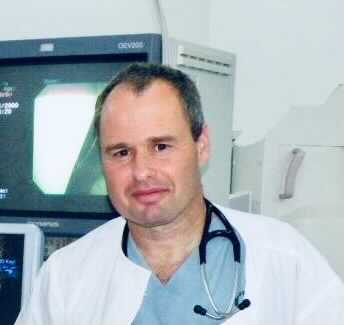
Dr. Amir Abramovich, one of Body Vision’s newest partners and Director of Interventional Pulmonology at Carmel Medical Center shares how, in most cases, Body Vision’s advanced, real-time imaging gives him the same level of confidence as cone-beam CT (CBCT).
Body Vision: Please share your experience with the Body Vision System.
Dr. Amir Abramovich: I find myself, more and more, using Body Vision for precise localization of small nodules by augmented fluoroscopy and tool-in-lesion confirmation. Many of the nodules I did with Body Vision are nodules I would’ve historically have chosen to do with the CBCT. Although CBCT is still the gold standard, I am confident that in most cases, Body Vision provides me with the same confidence as CBCT in tackling nodules around 10mm. So far, the Body Vision system is providing me with an extraordinary experience.
What would you say is the biggest benefit you get from the Body Vision system?
I believe that Body Vision’s tool-in-lesion confirmation is one of the biggest advantages of the system. It truly feels like I am working with CBCT with the added comfort of not needing to leave the room for the tomographic spin.
My ability to stay in the room with my staff and have everyone exposed to much lower radiation is key. Particularly for smaller nodules, it’s important for me to be able to stay with my hands on the bronchoscope. The fact that I can keep the scope at the exact position pointing at the lesion and be able to confirm tool-in-lesion right before biopsy while holding my scope in the exact same way as I know I’m going to hold it while biopsying is a huge advantage that CBCT does not offer right now.
What convinced you to buy the Body Vision system in the first place?
The main reason is that I navigate to lesions using thin bronchoscopes. One of my biggest navigation difficulties is when I can’t see the lesion on the fluoroscope either because it is too small, it has ground-glass opacity, it’s hiding behind the diaphragm or the heart, or the lesion is anterior or posterior. In cases like these, I didn’t have the ability to confirm that I had reached the lesion or the information I needed to adjust the bronchoscope position. This is the reason I started using CBCT. Body Vision’s precise, tool-in-lesion and augmented fluoroscopy capabilities can confirm that I am at the right place. This is incredibly important for my success.
With Body Vision, I can also continue to use thin bronchoscopes -- the three or four-millimeter bronchoscopes without being limited by a system that forces me to use different kinds of extended working channels or catheters that, without, you are either unable to use the system or miss out on most of its features. I wanted to continue to navigate using the tools of my choice, but with an essential ability to confirm localization at the lesion. It was very important that I find a system that integrates with the way I work, and, in that sense, the Body Vision system has met and exceeded my expectations.
What advice would you give physicians considering the Body Vision system?
I would say the most important thing in peripheral navigation is real-time, tool-in-lesion confirmation: the knowledge that the tip of your biopsy tool is indeed in the lesion, not at a virtual spot. This “tool-in-lesion” knowledge when you open the forceps or use the needle is necessary to achieve a definitive diagnosis. This is critical and this is exactly what Body Vision is enabling and is why each pulmonary practice should seriously consider acquiring and using this system.
What do you think the potential is for the Body Vision system in the future?
In the past, I’ve encountered nodules that I knew I could get to them but never knew if I really was there because I couldn’t see them under fluoro and they were small enough that I wasn’t sure Radial EBUS would show me anything either. I always said, if only I had something that would mark where the lesion was and be able to follow this mark while I’m navigating. Body Vision allows me to do that in the comfort of my bronchoscopy suite using hardware that is already there. So much so that, these days, I surprise myself with the type of nodules I agree to try and get to. For me, the 3mm ultrathin scope combined with the Body Vision system is the winning combination. There is no nodule, certainly not one with a bronchus sign, even if it’s tiny and very peripheral, that I can say I wouldn’t try getting to. With Body Vision’s advanced imaging, I feel like a blind person who got his vision back.